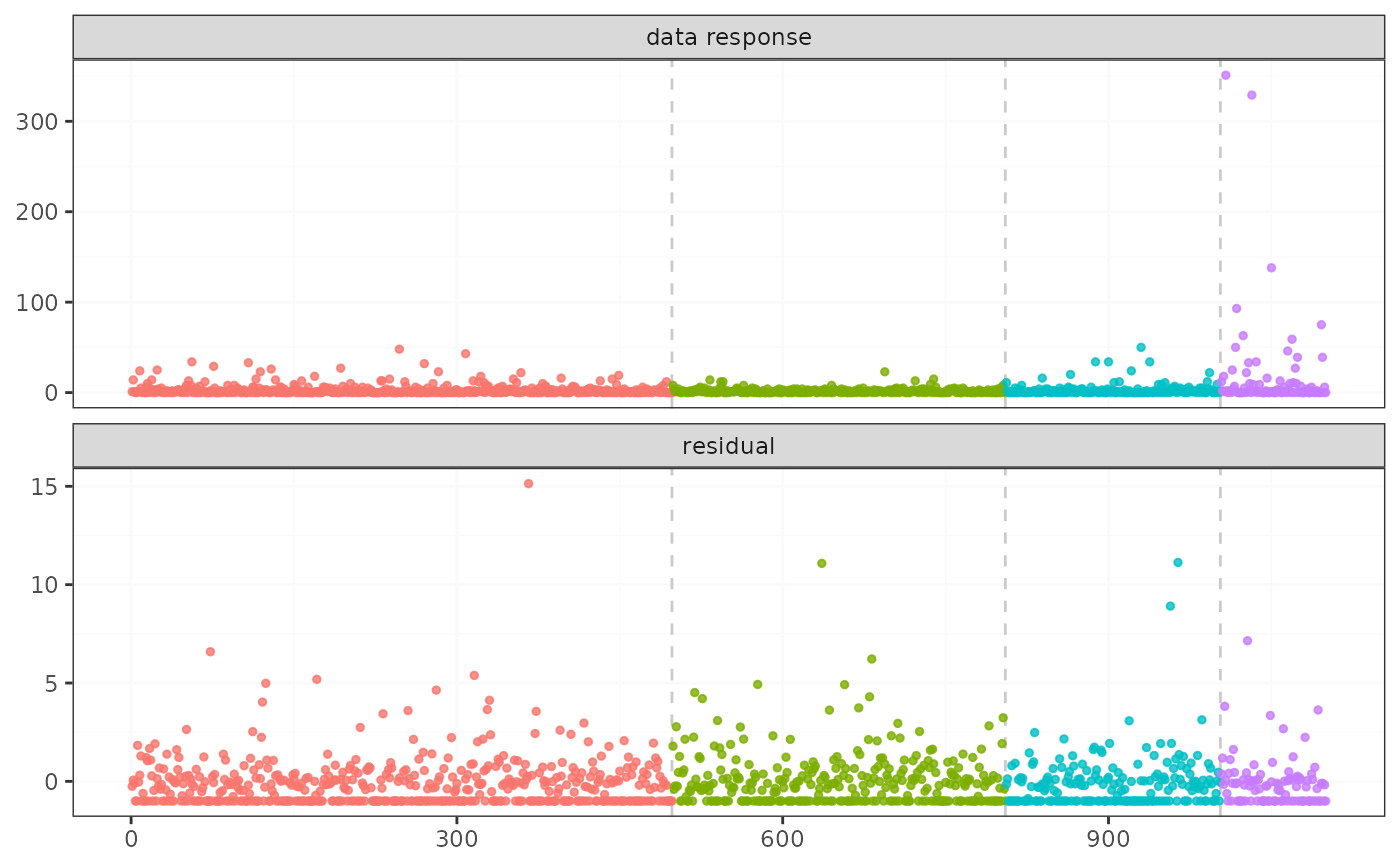fastcpd_poisson() and fastcpd.poisson() are
wrapper functions of fastcpd() to find change points in
Poisson regression models. The function is similar to fastcpd()
except that the data is by default a matrix or data frame with the response
variable as the first column and thus a formula is not required here.
Arguments
- data
A matrix or a data frame with the response variable as the first column.
- ...
Other arguments passed to
fastcpd(), for example,segment_count.
Value
A fastcpd object.
Examples
# \donttest{
if (requireNamespace("mvtnorm", quietly = TRUE)) {
set.seed(1)
n <- 1100
p <- 3
x <- mvtnorm::rmvnorm(n, rep(0, p), diag(p))
delta <- rnorm(p)
theta_0 <- c(1, 0.3, -1)
y <- c(
rpois(500, exp(x[1:500, ] %*% theta_0)),
rpois(300, exp(x[501:800, ] %*% (theta_0 + delta))),
rpois(200, exp(x[801:1000, ] %*% theta_0)),
rpois(100, exp(x[1001:1100, ] %*% (theta_0 - delta)))
)
result <- fastcpd.poisson(cbind(y, x))
summary(result)
plot(result)
}
#>
#> Call:
#> fastcpd.poisson(data = cbind(y, x))
#>
#> Change points:
#> 506 838 1003
#>
#> Cost values:
#> 248.1639 221.1317 74.88469 48.95659
#>
#> Parameters:
#> segment 1 segment 2 segment 3 segment 4
#> 1 1.0154681 0.6568705 1.0371861 1.4451928
#> 2 0.2763783 -0.2131387 0.2648813 0.9910079
#> 3 -1.0493262 -0.5942795 -0.9801554 -1.4354638
 # }
# }